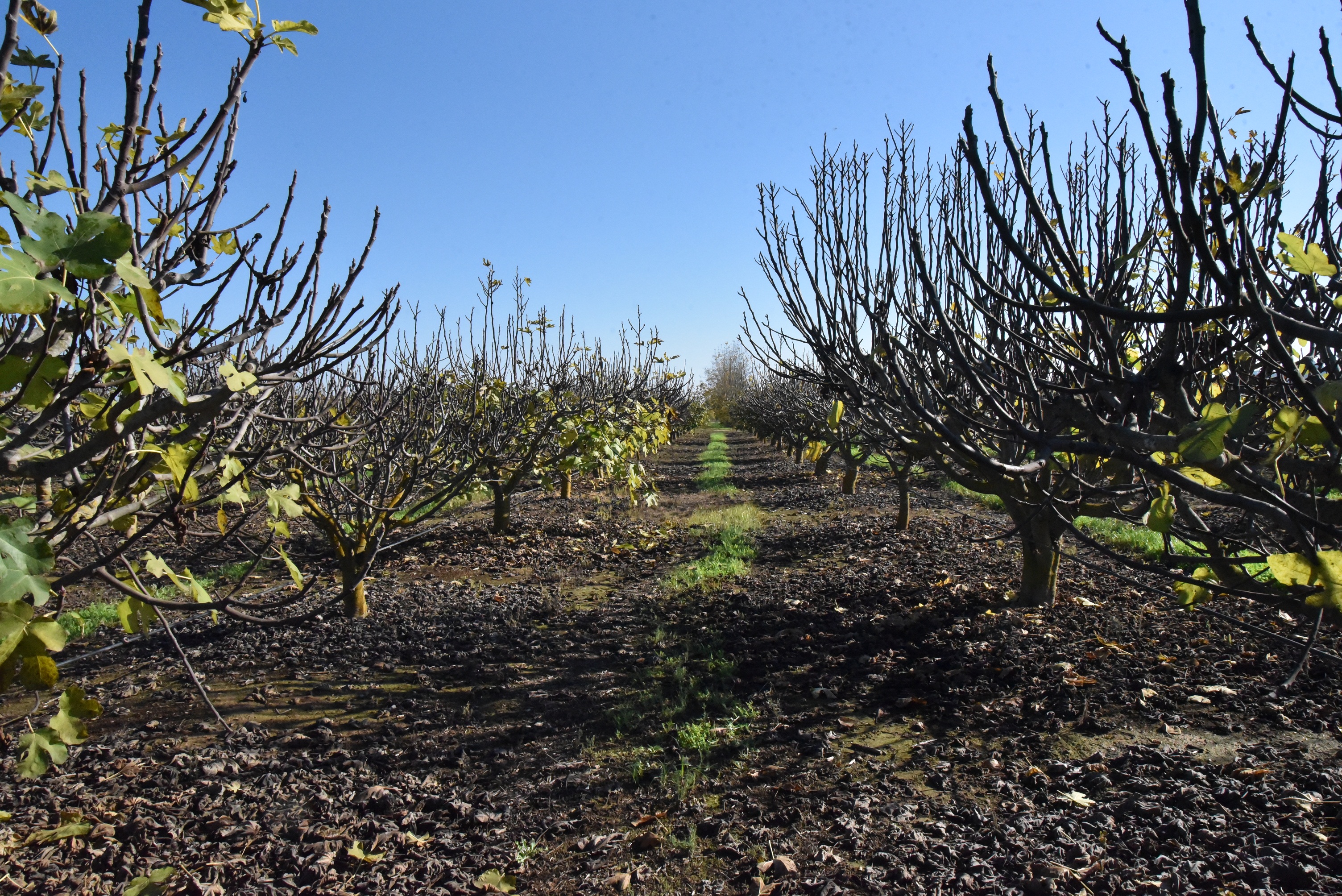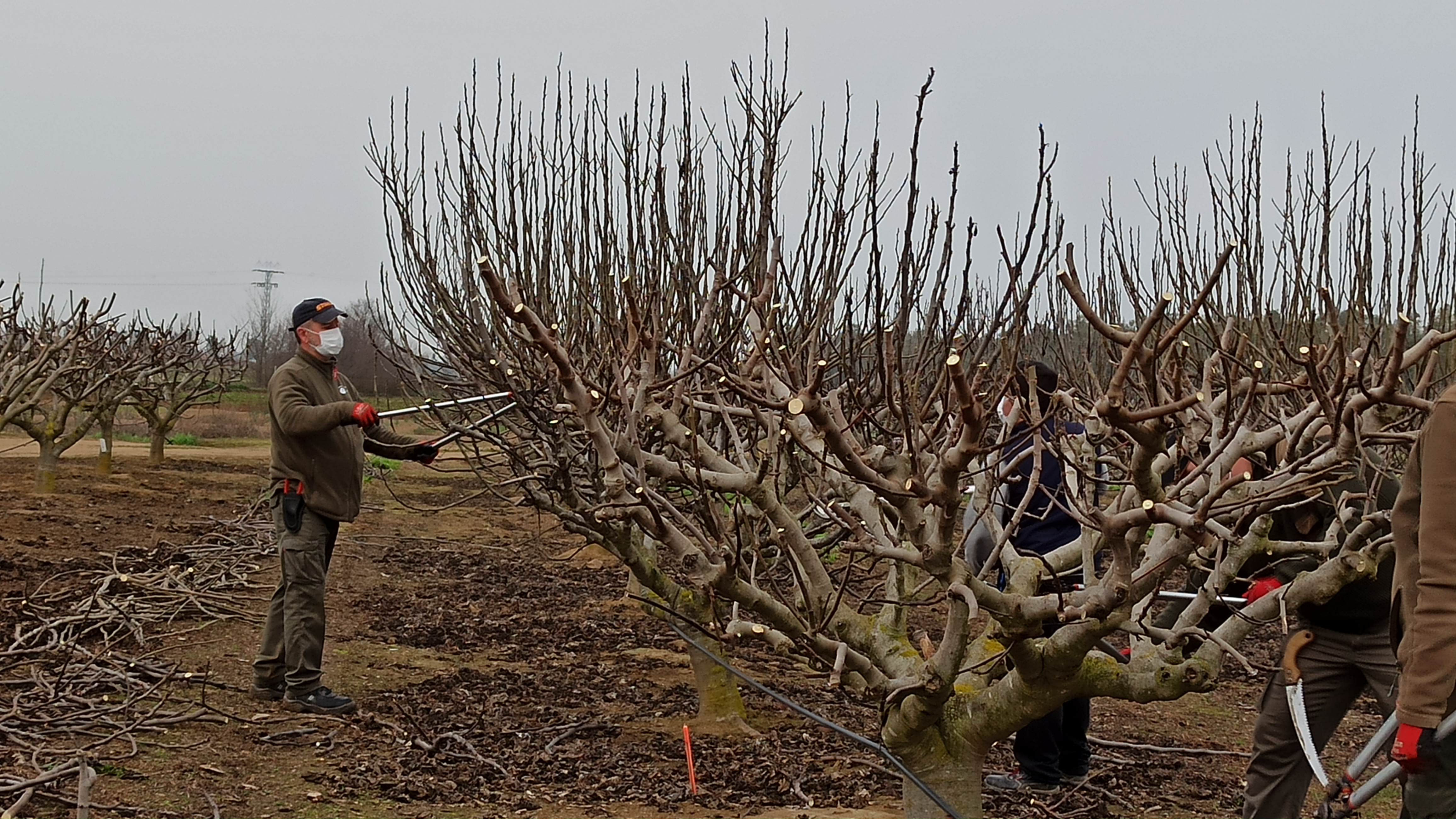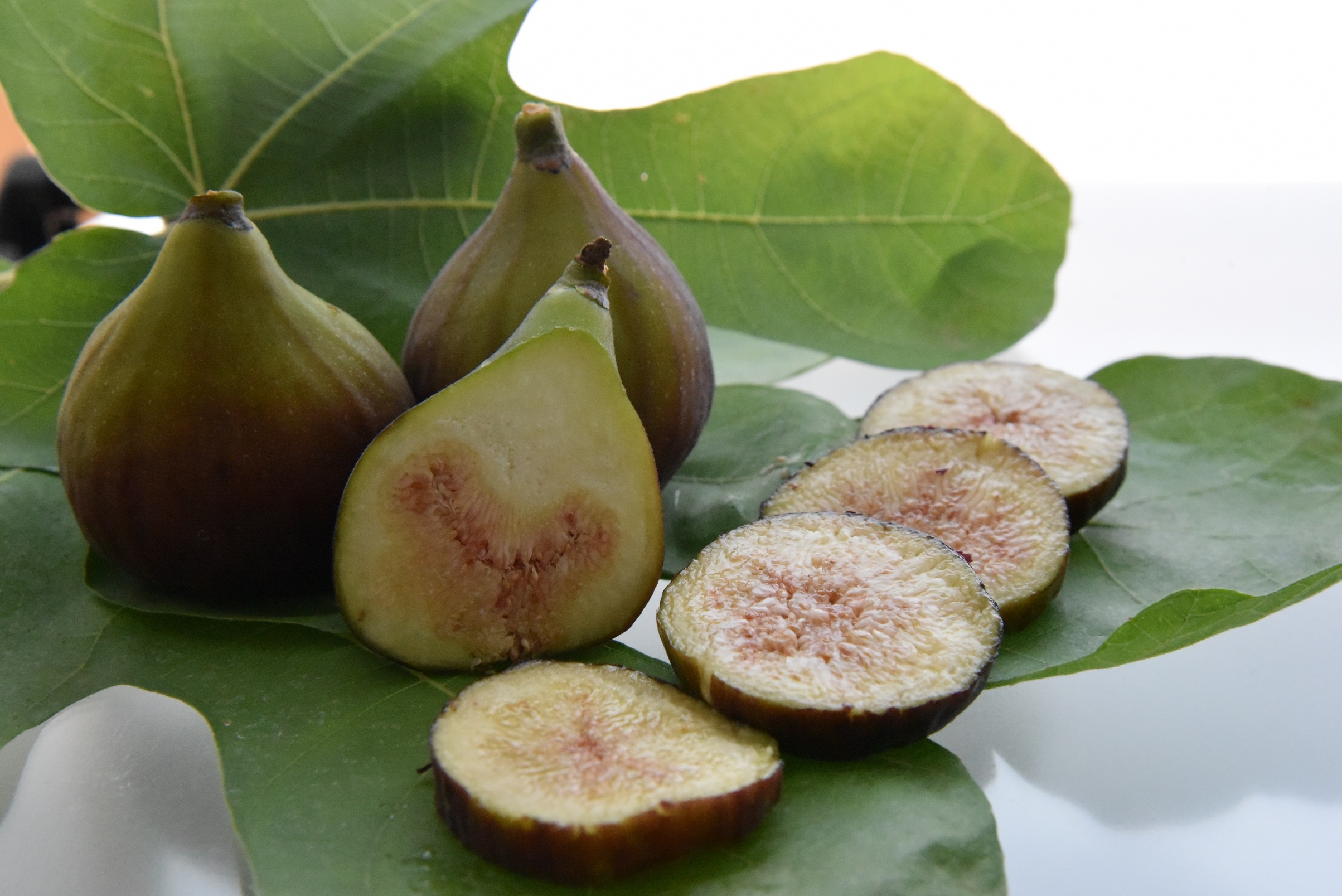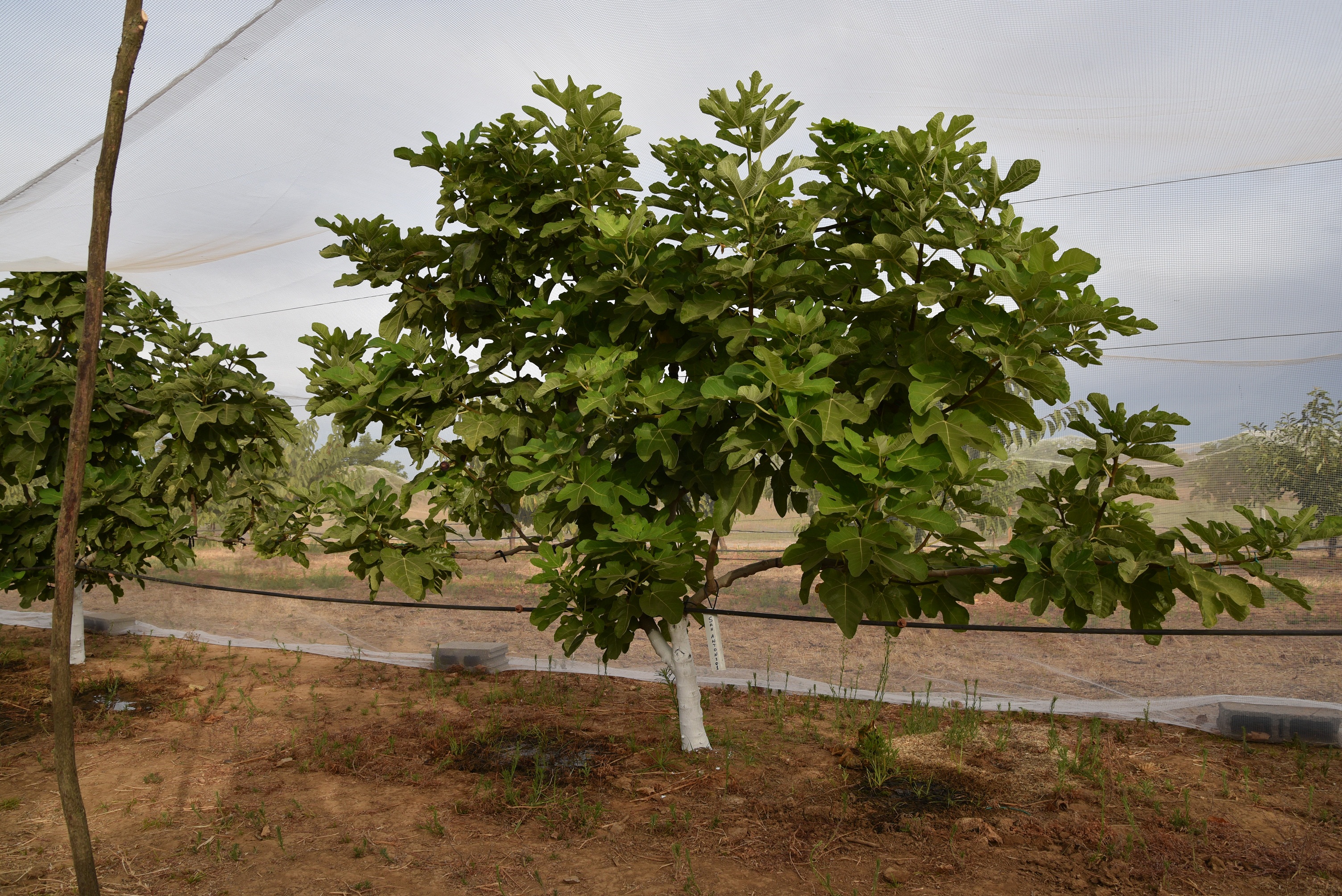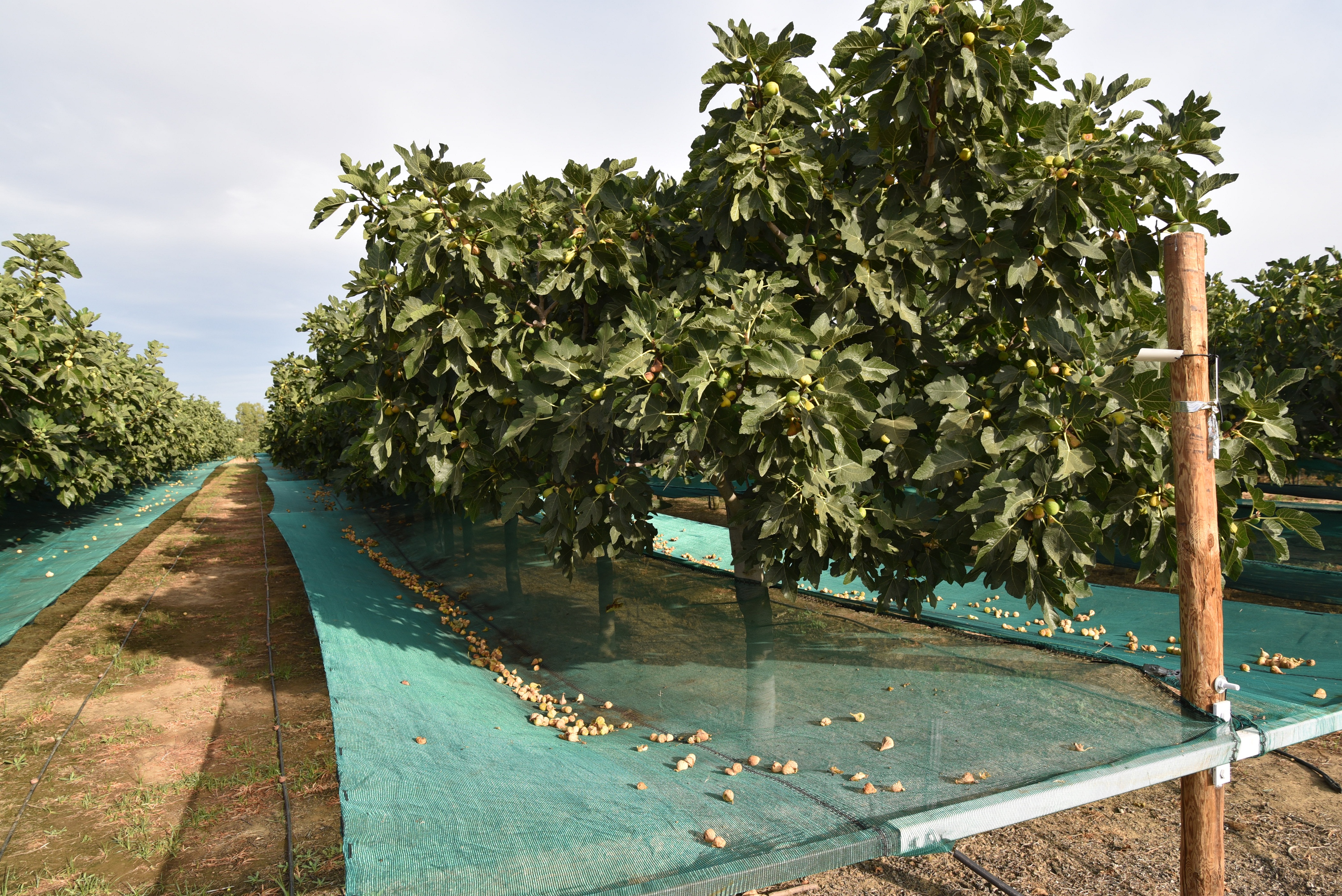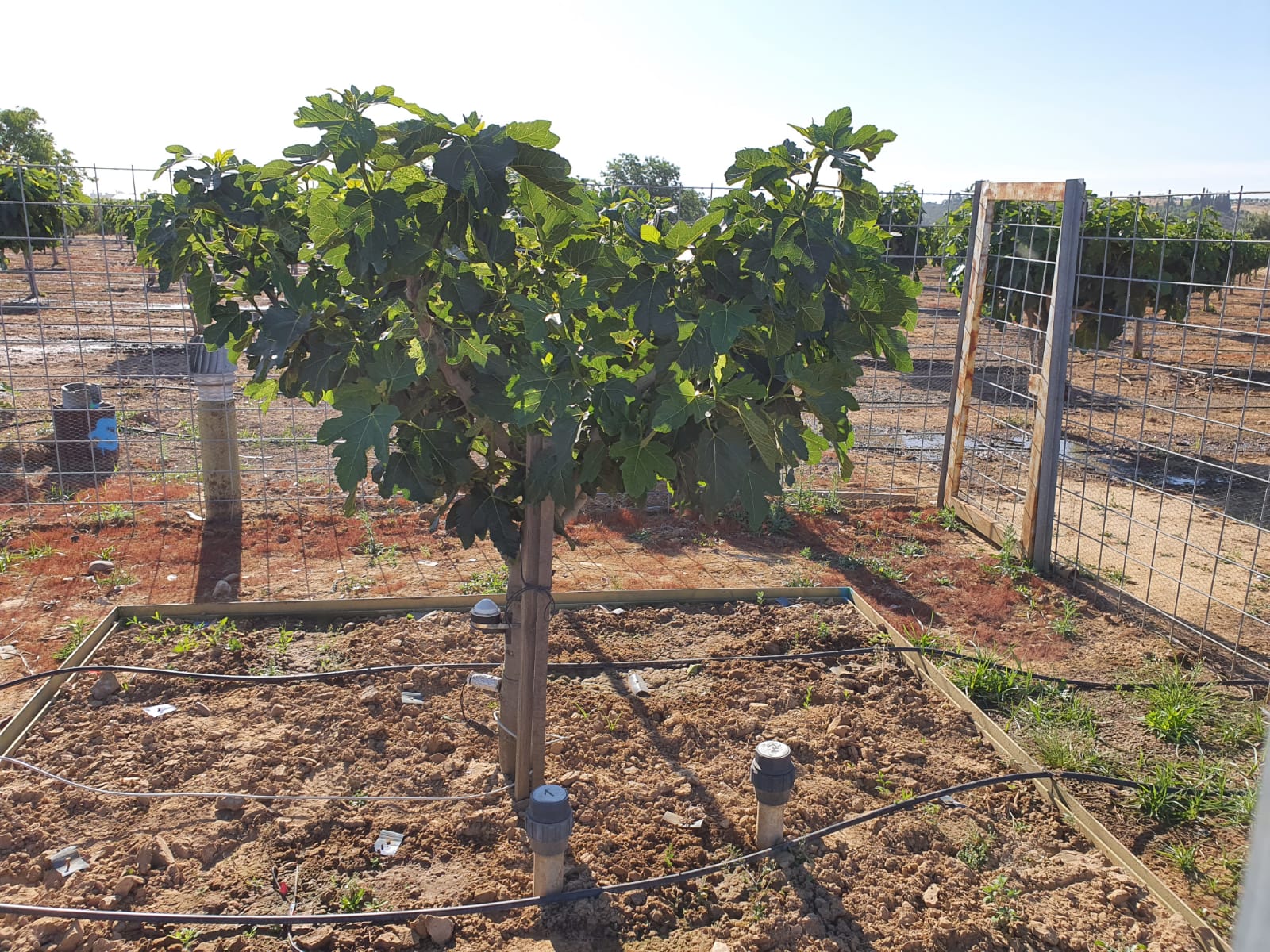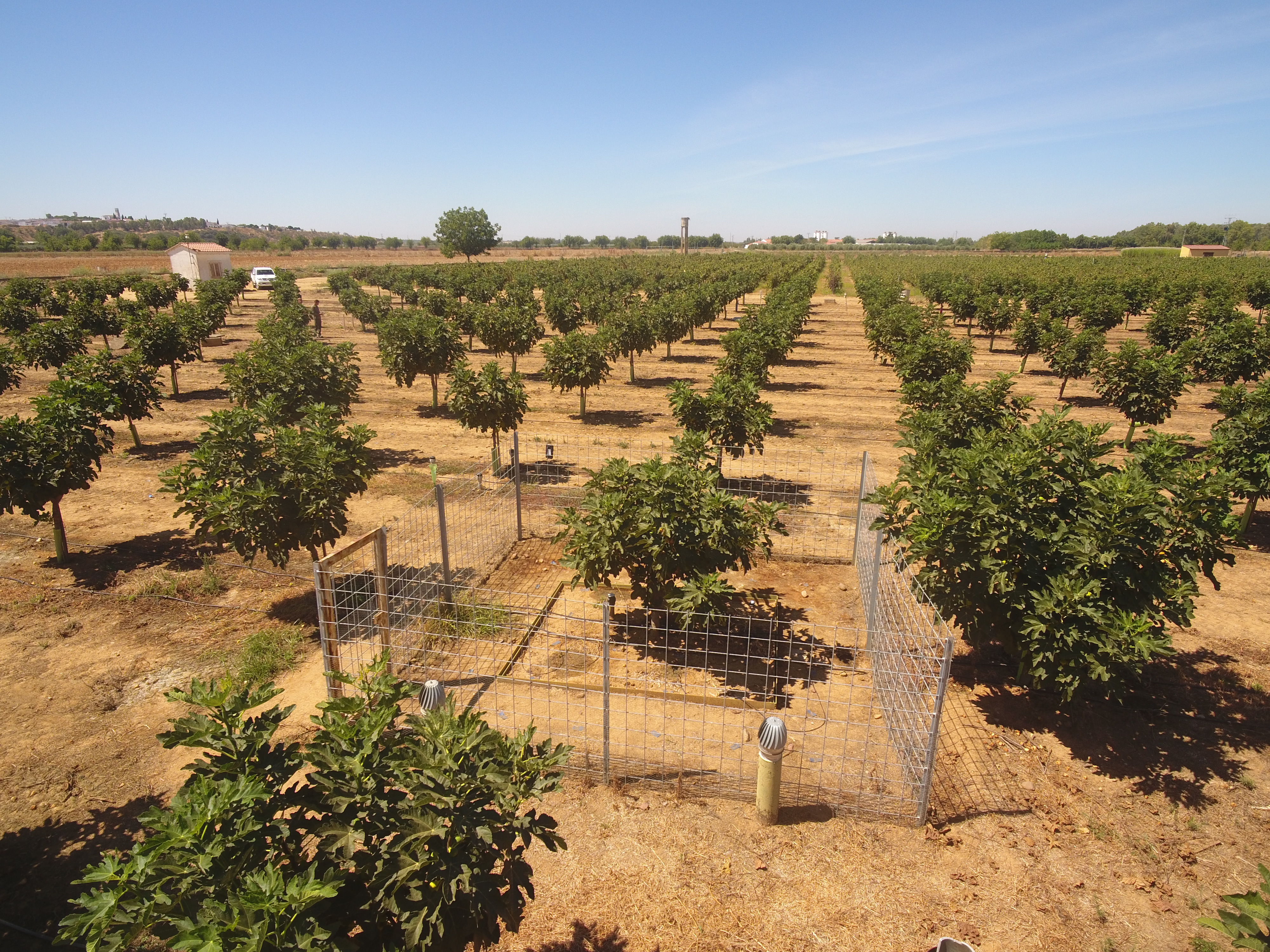Common fig
 General information
General information
The common fig (Ficus carica L.) is a traditional crop of the Mediterranean region which differs from other fruit trees mainly because it produces two different fruits (breba figs and ordinary figs). In Extremadura, it has been traditionally grown in single-variety dryland plantations, producing large-crowned trees that are situated at large distances from each other, thus posing handling difficulties when destined to the fresh consumption market.
 Growth requirements
Growth requirements
The introduction of this species on irrigation lands as a fruit-production alternative, together with the increase in the demand of both the fresh and the dry fig product revealed the need to address various aspects of its cultivation with the purpose of consolidating its establishment on the irrigation areas of Extremadura and improve the scientific knowledge. However, it is necessary to differentiate between the growth of the common fig for fresh consumption and for its consumption as a dry fruit in order to explain the types of issues that the product can have and the solutions required.
 Lines of research
Lines of research
CICYTEX, alongside with the Spanish Office for Variety Acquisition, organised the availability of common-fig varieties for growth so that fruit farmers can avail of fig trees with features that are suitable for fresh and dry consumption. Cicytex works in cooperation with the University of Extremadura in the study of various growing systems according to production purposes, by implementing irrigation and nutritional strategies and by assessing the general quality and fruit postharvest life, since these are very delicate and nutritious fruits. This work focuses also on the analysis of the various stages of the dry fig’s production process in order to develop a comprehensive management system that can help obtain a high-quality health product, with a minimised occurrence of plagues and mycotoxin-producing fungi by implementing the use of biocontrol agents in order to control the mycotoxigenic fungi on the field and during postharvest storage time.
New lines have also been added for the selection of heathy clone plants from the most interesting varieties in commercial terms which, due to their being so old, have proven high intracultivar variability relating to various aspects such as fruit size, vigour, productivity, plague and disease resistance and quality.
 New production systems
New production systems
CICYTEX saw the need to implement new production systems for figs produced in irrigation lands. In terms of fresh fruit consumption, intensive plantations with free-standing training systems and trellising training systems, which make tasks such as harvesting and plant treatment easier, as well as improving the light caught by breba figs and common figs, have been under study.
In terms of dry figs for consumption as such, several super intensive plantations have been under study with the implementation of a suspended mesh harvesting system, which allows the recollection of figs from the mesh avoiding their contact with the floor. This recollection system improves the health quality of dry figs. Additionally, the study of intensive plantations with trellising training systems for the consumption of dry figs has been initiated, which introduces the use of mesh along the plantation line for the recollection of figs as well as nut aspirators.
 Introduction of irrigation in common fig growing
Introduction of irrigation in common fig growing
The incorporation of irrigation to the common fig means a major change in the physiologic behaviour of this plant; and a first step for this transformation to be successful is to be aware of the water needs of the crop throughout the entire cycle. At Finca La Orden (CICYTEX) we have a weighing lysimeter for a common fig tree of the “Calabacita” variety, where we are quantifying the actual water consumption since the time of planting. At the same time, the times of highest and lowest vulnerability of the fig tree in the event of water deficit are being identified with the purpose of applying irrigation strategies leading to water use optimisation.
 Fertilisation
Fertilisation
Preliminary studies are being carried out on the indicators of the nutritional status of the common fig with dry production purposes. These allow to establish certain reference values to contribute to an efficient management of fertilisation.
 Climate change adaptation
Climate change adaptation
On the other hand, in relation to the adaptation of this crop to the weather conditions of each area and variability of this species, CICYTEX has been involved in the international selection of fig varieties that are resistant to draught and more saline soils. In total, 300 genotypes or varieties of figs from fig germplasm banks –amongst which are the national bank of CICYTEX, and local cultivars situated in Spain, Turkey and Tunisia- will be studied. Parameters such as performance, harvest dates, weight, qualitative and quantitative traits, tolerance to factors associated to climate, such as draught and poorer soils due to the increase of salinity, will be evaluated. This way, a future strategy is proposed through which there will be a genetic selection of fig cultivars that are best adapted to poor soils to be grown even in association with other crops.
In spite of its importance, only few studies have been carried out up to now on the genetic improvement of the fig and therefore, the majority of its production in the Mediterranean region are local cultivars which are characteristic of each area.




